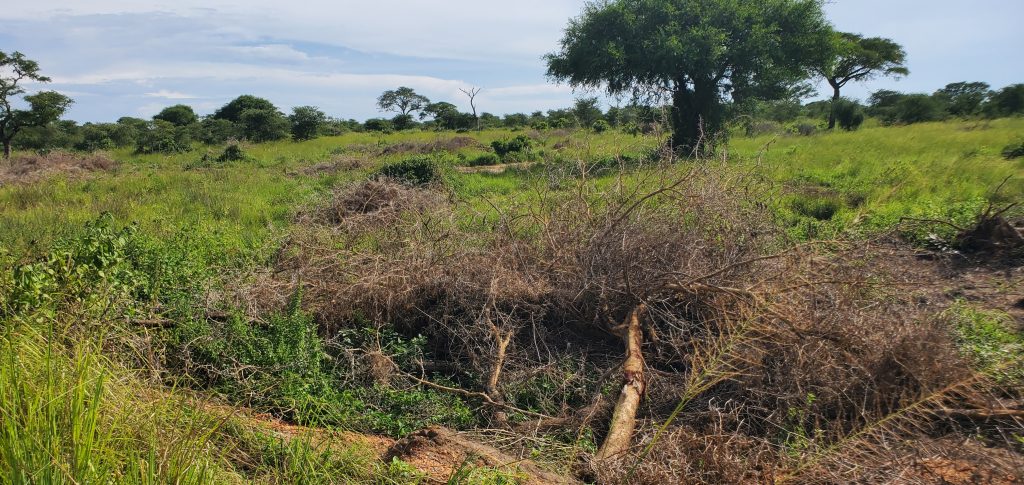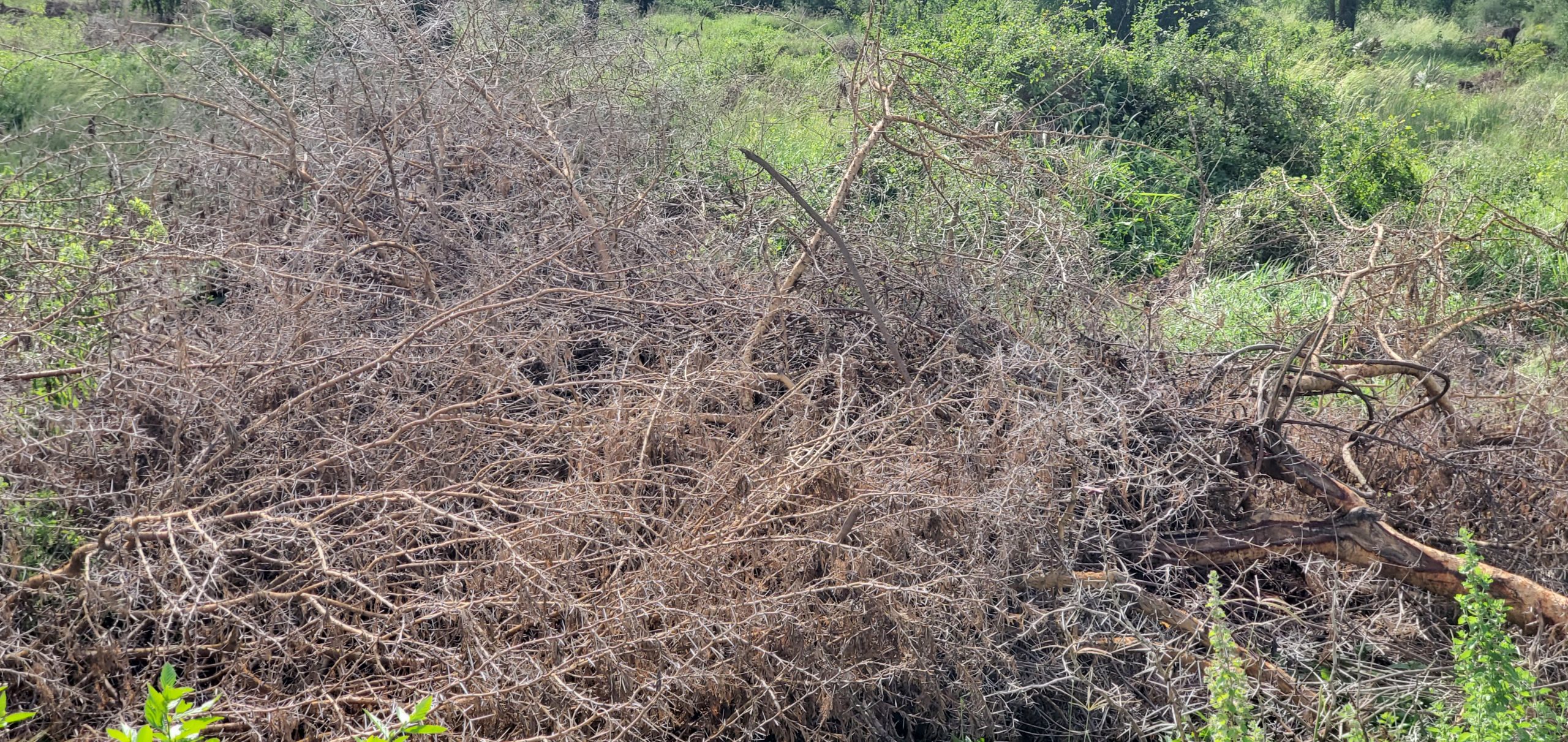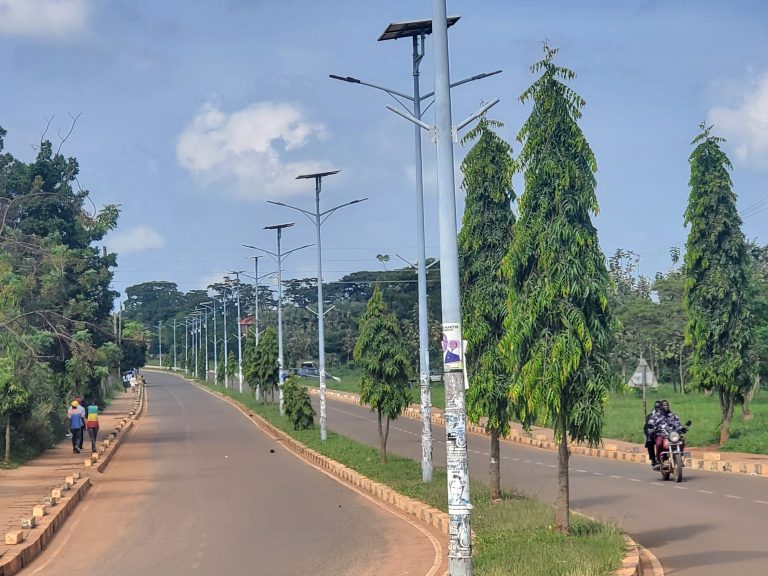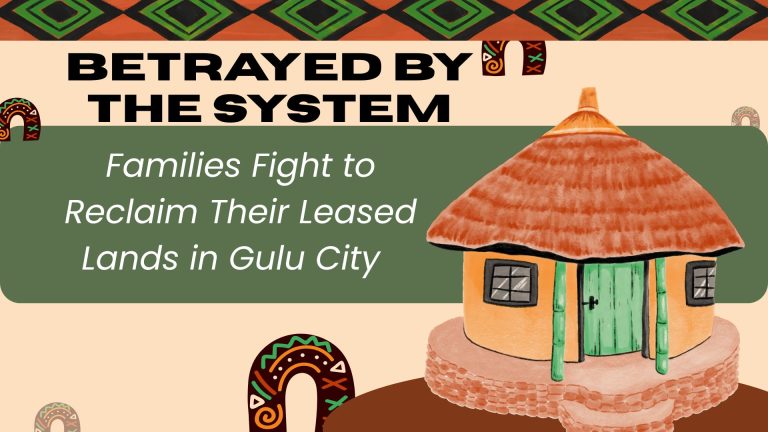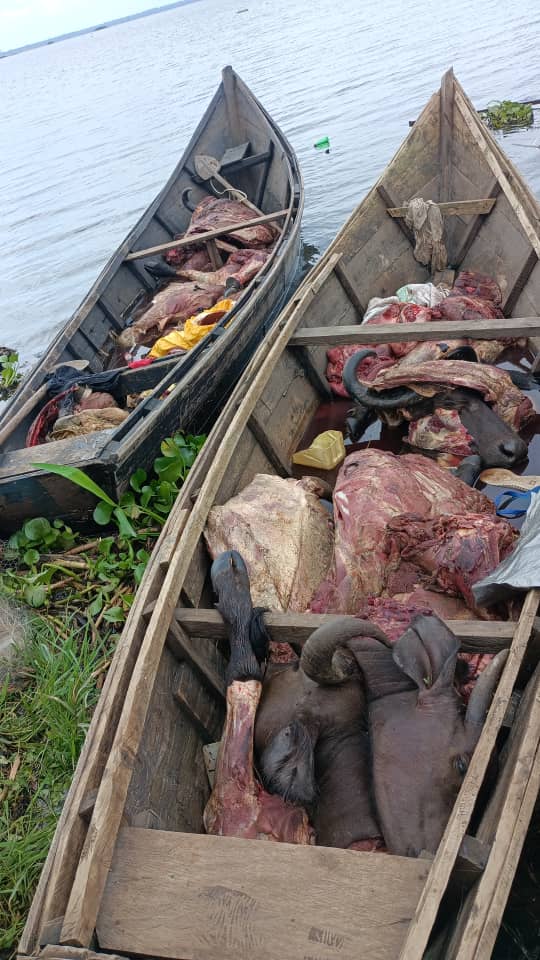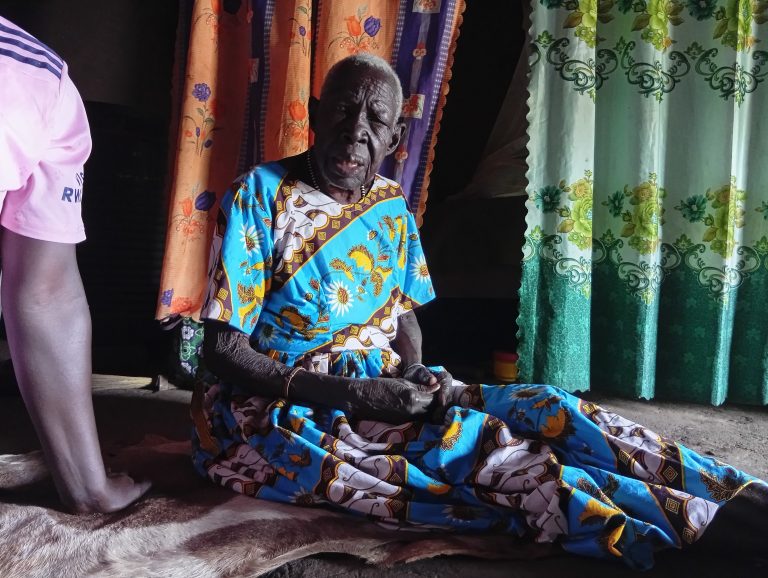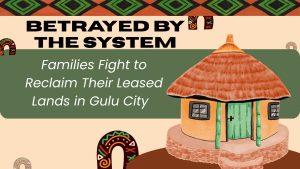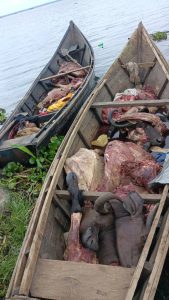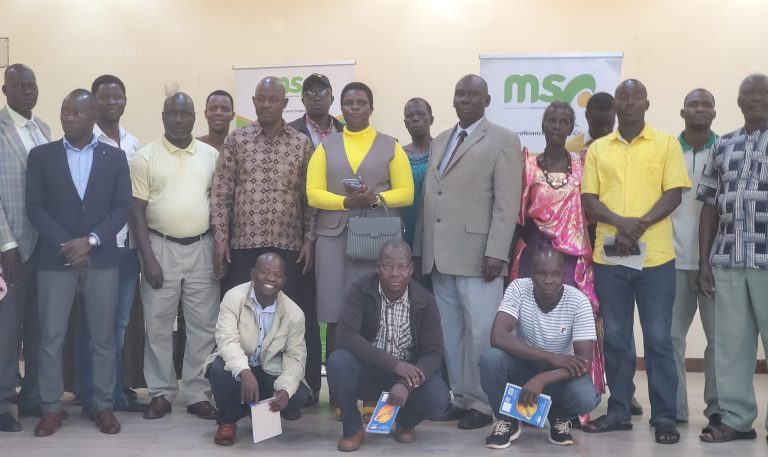Uprooted invasive plant species await burning at Murchison Falls National Park as part of a 2023 habitat restoration effort led by the Uganda Wildlife Authority (UWA)
By Willy Chowoo
Uganda is home to the majority of the world’s mountain gorillas, a remarkable species that has captured the hearts of many around the globe.
In 2018, Uganda was home to nearly half of the world’s mountain gorilla population, estimated to be around 1,000 individuals globally. Bwindi Impenetrable and Mgahinga National Parks alone are home to 459 gorillas, according to the most recent wildlife census. These gentle giants inhabit the lush, verdant forests of Bwindi Impenetrable and Mgahinga National Parks, two of Uganda’s most iconic conservation areas.
However the number is expected to increase since the last census in 2018 , statistics from the UWA in January 2025 reveal that gorilla births at Bwindi Impenetrable National Park alone have increased 11 times since 2017, with a total of 121 registered gorilla births. The highest number of births occurred in 2021, which was at 21, demonstrating the success of conservation efforts.
In a major boost to primate conservation efforts, Uganda Wildlife Authority recently launched the 2025 Bwindi-Sarambwe Mountain Gorilla and inaugural Chimpanzee Census. The census aims to generate critical data on the distribution, population size, and genetic health of mountain gorillas and chimpanzees—two of Uganda’s most iconic and endangered primate species.
However, these habitats are under threat, not from poaching or deforestation alone, but from a new, insidious menace: invasive plant species. These plants, including Lantana camara, eucalyptus, and tea, are taking over the mountain gorilla habitats in Bwindi Impenetrable and Mgahinga National Parks. These alien plants are spreading rapidly, choking the forest and threatening the very survival of the mountain gorillas and the ecosystems that support them.
As they choke the land, these invasive species are threatening the gorillas’ food sources and pushing them into nearby human settlements, causing an increase in human-wildlife conflict.
Uganda’s iconic mountain gorillas is one of the world’s most endangered species, but not all hope is lost. Conservationists, rangers, and local communities are actively working together to combat this environmental threat and restore these vital habitats, restoring the forests to ensure that these endangered primates have enough food and space to thrive. Their efforts are critical in protecting the remaining population of Uganda’s mountain gorillas and ensuring the survival of the fragile ecosystem
The Rise of Invasive Species
Invasive plant species such as Lantana camara, tea, eucalyptus, and black wattle are wreaking havoc on Uganda’s protected areas. These species spread aggressively, often displacing native vegetation that is essential to the survival of mountain gorillas. The most affected areas are Bwindi Impenetrable National Park (BINP) and Mgahinga Gorilla National Park (MGNP), where these plants have already overtaken approximately 2% of the habitat.
According to Mr. Guma Nelson, the Conservation Manager at Bwindi Impenetrable National Park, the impact of these invasive plants is particularly severe in areas where mountain gorillas feed. “Lantana camara grows very fast and is dispersed by wind and birds,” he explains. “Once it colonizes an area, it forms dense thickets, blocking access to natural food sources for gorillas.”
As a result, mountain gorillas are increasingly forced to move out of the park and into nearby communities in search of food. This encroachment leads to heightened human-wildlife conflict as the gorillas raid crops, creating tensions between locals and conservationists. “When gorillas move outside the park boundaries, they end up in farmlands and villages, and that increases the conflict with the people who depend on the land for their livelihoods,” Mr. Guma adds.
The Office of the Auditor General’s FY 2021 report indicates that invasive and exotic plant species are negatively impacting wildlife populations in Uganda’s conservation areas. These species are displacing native plants by competing for resources, degrading habitats, introducing diseases, and in some cases, posing a direct threat to animals due to their toxicity.
“As of 2018, invasive plant species had taken over approximately 47% of Lake Mburo, Queen Elizabeth, and Kidepo Valley national parks, according to data from the National Agricultural Research Organization (NARO).
The spread of invasive species exacerbated by climate change.
The rapid spread of invasive plant species within Uganda’s national parks has been largely attributed to the effects of climate change. Increasingly frequent droughts and floods have disrupted natural ecosystems, creating favorable conditions for invasive species to outcompete native vegetation. Unlike indigenous plants, many of these invaders are more climate-resilient and thrive under extreme weather conditions. As a result, native biodiversity is under growing threat, affecting both wildlife habitats and ecological balance.
Mr. Kato Raymond, an invasive species expert and Ecological Monitoring and Evaluation Expert at UWA, explains that the rapid spread of invasive species can be attributed to climate change, which has altered rainfall patterns and increased temperatures. “We are receiving more rainfall than we did 50 years ago, which has allowed some plants, like Lantana camara, to flourish,” Mr. Kato says. “Invasive species can thrive when the environmental conditions favor their growth, and they have few natural predators to keep their population in check.”
According to Dr. Atube Francis, a biologist and lecturer at Gulu University’s Faculty of Agriculture and Environment, prolonged droughts and flooding have destabilized local ecosystems, giving invasive species a competitive edge over native plants.
“Climate change exerts pressure on the environment by introducing prolonged droughts and unpredictable rainfall,” Dr. Atube explains. “In such harsh conditions, invasive species with adaptive characteristics—such as deep rooting systems and the ability to thrive in dry conditions—have an advantage over native plants, which are often not equipped to survive these environmental stresses.”
These changes have disrupted the natural reproductive cycles of many native plants, weakening their ability to compete with the rapidly growing invasive species. “Invasive plants are highly competitive,” Dr. Atube says. “They adapt quickly, spreading aggressively and depleting resources like water and soil nutrients that native plants need to survive.”

In the forests of Bwindi and Mgahinga, the consequences of this imbalance are profound. Gorillas, who rely on specific plants for food and shelter, find their usual food sources depleted as invasive species take over. This shift not only affects the gorillas’ diet but also disrupts the broader ecosystem, threatening the survival of other wildlife species.
The Battle to Remove Invasive Species
To combat this growing threat, the Uganda Wildlife Authority (UWA), along with conservationists and local communities, has ramped up efforts to remove invasive species from national parks. These efforts are critical to maintaining the health of the ecosystems that support mountain gorillas and other wildlife.
In the financial year 2022/2023 , the UWA has cleared invasive species from more than 7,500 acres across Uganda’s national parks, including Bwindi, Mgahinga, and others like Lake Mburo and Queen Elizabeth National Parks. The most significant work has been done in Bwindi and Mgahinga, where conservationists have manually uprooted invasive plants like Lantana camara, eucalyptus, and tea, and have encouraged the regeneration of native vegetation.
Mr. Hangi Bashire, the Communications Manager at the Uganda Wildlife Authority (UWA), says over 253 acres of invasive plant species have been cleared in Bwindi Impenetrable and Mgahinga Gorilla National Parks as part of a long-term strategy to restore gorilla habitats and ensure sufficient food within the parks.
“We are actively managing invasive species in gorilla habitats, especially in Bwindi and Mgahinga,” Mr. Hangi explains. “We conduct regular surveillance to identify key areas affected by invasive, and we carry out targeted removal using manual uprooting and other eco-friendly methods. We’re working closely with conservation partners, researchers, and local communities who are trained and involved in these efforts.”
According to Mr. Hangi, removing invasive species is crucial for improving habitat quality, reducing competition for resources, and strengthening the overall resilience of Uganda’s protected ecosystems.
“These invasive plants often outcompete native vegetation,” he says. “Gorillas depend on indigenous plants for food and shelter. By removing invasive, we allow native species to regenerate, helping to maintain a healthy ecosystem that supports the survival of mountain gorillas and other wildlife in the forest.”
The Impact on Mountain Gorillas and Local Communities
For the mountain gorillas, the consequences of invasive species are dire. Without access to their natural food sources, gorillas are forced to venture into surrounding communities in search of sustenance. This has led to increased human-wildlife conflict, with gorillas raiding farms and crops, sometimes causing significant damage to local agriculture.
The Uganda Wildlife Authority (UWA) recorded 20,837 cases of human-wildlife conflict between 2020 and 2023, highlighting a persistent challenge in communities living adjacent to protected areas. Crop raids remained the most common form of conflict, with 2,315 incidents reported during the 2022/2023 financial year alone—often resulting in the loss of crops and livelihoods.
During the same period, elephants were the leading species involved in these conflicts, accounting for 319 reported cases. Their frequent incursions into farmland and homesteads caused widespread crop destruction and property damage. In comparison, mountain gorillas were linked to 12 crop-raiding incidents that year
But the fight to remove invasive species is also having a positive impact on local communities. In Bwindi, where Lantana camara and other invasive plants have been removed, local farmers have reported fewer gorillas entering their farms. “Before the removal of invasive species, gorillas used to leave the park in search of food, and they would destroy our crops,” says Tindiwengi Benard, chairperson of the Bujengwe Porters Association at Bwindi. “Now, after the removal of invasive plants, the gorillas are staying inside the park, and our farms are safer.”
The efforts to remove invasive species are also benefiting local communities in other ways. Through a program that involves manual labor to clear invasive plants, many community members are now employed in conservation work. “We employ local labor to clear the invasive species,” says Mr. Guma. “The community members are paid for their work, and they also get firewood, which is an additional benefit.”
UWA’s Revenue Sharing Building Trust
Additionally, the UWA allocates 20% of park entry fees to support local communities, funding projects like schools, health centers, and water systems. This has helped build a strong partnership between local residents and the park authorities. “The community is fully engaged in the conservation efforts,” says Mr. Hangi Bashir, UWA’s Communications Manager. “We are working together to restore the forests and ensure that mountain gorillas have enough food, and the community benefits from the conservation efforts.”
UWA reveals that it disbursed nearly UGX 10 billion to communities living near national parks in the last financial year under its Revenue Sharing Programme, a deliberate intervention aimed at improving local livelihoods and fostering community appreciation of conservation efforts.
According to Mr. Hangi, the 20% of gate collections from tourism activities in each conservation area are allocated annually to local communities. The funds are directed toward development projects that are vetted, approved, and implemented in communities bordering national parks.
“Revenue sharing is a deliberate intervention to help the communities improve their livelihoods, appreciate conservation, and feel the benefits of tourism activities within their areas,” Mr. Hangi explained.
He added that the money is distributed as a conditional grant, channeled from UWA to the districts, and further down to the sub-county and parish levels—targeting parishes that directly border national parks.
Communities use these funds to implement projects such as building schools, health centers, water sources, and eco-tourism initiatives. While communities identify the priority areas for investment, all projects must be pre-approved to ensure alignment with conservation goals and sustainable development principles.
“Every year, we declare how much was collected and how much is allocated per conservation area. The money is then directed to support community projects that have been approved for implementation,” Mr. Hangi said.
In addition to the annual 20% revenue-sharing allocation, UWA has also introduced a $10 gorilla permit levy, which is added to every gorilla trekking permit purchased. This additional funding is given to districts bordering gorilla parks such as Bwindi Impenetrable National Park and Mgahinga Gorilla National Park, specifically to improve social services in those areas.
“Every time someone buys a gorilla permit, $10 goes directly to the communities through their districts. This levy further supplements revenue-sharing funds and supports broader social development in gorilla-hosting regions,” Mr. Hangi noted.
The revenue-sharing program, introduced in 1995, is part of UWA’s broader strategy to reduce human-wildlife conflict and promote coexistence by ensuring that communities benefit from the conservation of wildlife and natural resources. By reinvesting tourism revenue into local development, UWA aims to build strong community support for conservation and reduce pressure on protected areas.
The nearly UGX 10 billion distributed in the past year supported projects in multiple districts, including those neighboring Uganda’s prized gorilla parks, which generate significant revenue from international tourism
Economic Significance of Gorilla Tourism
Mountain gorillas are a significant tourism attraction in Uganda, contributing heavily to the country’s wildlife tourism revenues. Tourism remains one of the pillars of Uganda’s economy. According to data from the Ministry of Tourism, the sector contributed 7.7% of Uganda’s GDP in 2020, even amidst the COVID-19 pandemic. In 2021, tourism accounted for $1.6 billion in revenue, recovering slightly from the sharp decline in 2020. By 2022, the sector’s contribution had increased to $1.9 billion, signaling a steady recovery and growth.
Gorilla tourism alone is a major driver of these revenues. Gorilla trekking is a premium experience, attracting high-paying tourists from around the world. The activity generates substantial income and supports local community development through revenue-sharing programs. These initiatives have ensured that communities living near conservation areas receive a percentage of tourism income, thereby fostering harmonious relationships and reducing human-wildlife conflict.
“Through gorilla tourism, many local communities have benefited from jobs as rangers, porters, guides, and service providers. The revenue generated from gorilla tourism has been reinvested into conservation activities and community projects,” noted Mr. Hangi.
By attracting high-end tourism and encouraging investment in infrastructure, gorilla tourism also contributes to regional development and international visibility. With continued protection of gorilla habitats and sustainable tourism practices, Uganda stands to further increase this contribution to its GDP while preserving one of its most iconic natural assets
Challenges in the Fight Against Invasive Species
Despite the progress made in removing invasive species, challenges remain. One of the biggest obstacles is funding. “Invasive species spread very fast, and we have limited funding for large-scale interventions,” Mr. Hangi explains. “As soon as we clear one area, the invasive species are already colonizing another part of the park.”
The terrain in Uganda’s national parks is also difficult to navigate, making manual removal labor-intensive and time-consuming. The UWA and its partners are working to scale up their efforts, but the task is formidable. The continued effects of climate change, which enable new invasive species to thrive, further complicate the situation.
“We need more funding to increase our efforts,” Mr. Hangi adds. “With additional resources, we can speed up the removal of invasive species and restore more habitats for mountain gorillas.”
A Hopeful Future
Despite the challenges, there is reason for hope. The combined efforts of the UWA, local communities, and conservationists are making a difference. The removal of invasive species is already showing positive results, with the regeneration of native plants and the return of healthy habitats for mountain gorillas and other wildlife.
The partnership between conservationists and local communities is also fostering a sense of shared responsibility for protecting Uganda’s unique wildlife. “The community is now more aware of the importance of protecting the gorillas and their habitats,” says Mrs. Jenifer Ainomugisha, a local farmer in Mgahinga. “We used to fight with the gorillas, but now we are working together to restore the forest. We earn money from conservation, and we are protecting our environment.”
As the fight against invasive species continues, the goal is clear: to protect Uganda’s mountain gorillas and ensure that future generations can enjoy these magnificent creatures in their natural habitat.
By removing invasive plants, restoring habitats, and fostering cooperation between local residents and park authorities, Uganda is taking significant steps toward ensuring the survival of its mountain gorillas. With continued support and resources, these efforts can protect one of the world’s most iconic and endangered species for generations to come.

